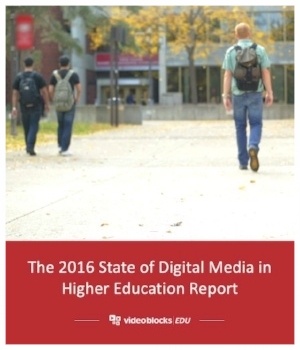
Graduation is upon us, and most students will soon be entering the workforce full time. For many of them, this will be the first time they’ve held a job—rather than an internship or part-time “side gig”—specific to their field of study and qualifications. As educators, it is important to prepare these students for the world they are about to enter, both in terms of job-specific knowledge and in terms of broader competencies essential to navigating the professional world. Of the latter, digital literacy is one of the most important—and perhaps even the most important—skill sets today’s teachers and educators can pass on to all of their students.
As we’ve written about in the past, digital literacy is paramount to developing critical thinking skills and intellectual empowerment, as well as a necessity for living in our technologically complicated world. While these qualities are important for students as they become well-rounded and capable individuals—which undoubtedly influences the quality of their work and insight, albeit often indirectly—there are other, even more direct ways that digital literacy applies to today’s professional world.
In our ever changing society, if there is one axiom that remains true, it is that regardless of vocation, technical competency and an understanding of our digital ecosystem are essential to navigating the working world of the future. According to The Muse, an influential career site geared towards young professionals, all of the most important skills workers will need by the year 2020 are digitally informed.
Digital Technology Is Changing the Career Landscape
Based on a larger study published last year, in its infographic, The Muse pinpointed six key “drivers of change” influencing the most necessary skills for those entering the workforce. Of these six, five of the drivers are rooted in how technology continues to shape our world:
- People are living longer.
- Technology can now augment and extend our own abilities.
- Daily life is now computational as innovations in sensors and processing make our world a programmable system.
- Our new media ecology and advances in communications systems require media literacies beyond text.
- Social technologies are driving new forms of production and value creation.
- Our world is now globally connected, highlighting diversity and adaptability.
Digital Literacy Is a Professional Competency
In light of these six drivers, it becomes even clearer that digital competencies are in and of themselves hirable skills for many employers, as well as being essential for understanding today’s media ecology.
A media-rich education, including interactive approaches such as digital storytelling or remix education, ensures that students are familiar with modern tools and “natural language” modes of expression. We are increasingly moving into what many scholars consider a post-literate world, one in which images, video, and the written or spoken word are used fluidly together, symbiotically, to communicate increasingly complex concepts. Modern rhetoric now includes TED talks, animated lectures, visual essays, and a plethora of other interactive and dynamic multimedia.
Giving students the tools not only to participate in these conversations but also to lead the discourse is vital to their future professionalization, as these are the same skills they will need to collaborate, analyze, innovate, and create in each of their future careers.
Smart Classrooms = Smart Workers
While digital paradigms will guide students entering the professional world, the tactile knowledge and “hands-on” experience gained working in media-oriented spaces—including smart classrooms, innovation labs, and makerspaces—provide students with skill sets that immediately and readily transfer to the workforce. Based on the aforementioned six drivers of change, The Muse pinpointed ten, technology-oriented strengths as “must haves” for future employers:
- An ability to determine deeper meaning or significance of what is being expressed via all mediums.
- An ability to connect with others in a meaningful and direct way via modern technologies and our global networks.
- A proficiency in problem-solving and critical analysis, especially when working with digital relationships or data.
- An ability to adapt to different cultural settings and modalities, necessitated by our global media ecosystem.
- An ability to translate specific information and data into abstracts while understanding the underlying reasoning.
- An ability to critically assess and develop content that uses evolving digital media, leveraging these tools for direct and persuasive communication.
- A transdisciplinary, multimedia mindset that eschews specialized or localized intelligences.
- A design or goal-oriented mindset that employs systems thinking and that develops tasks and work processes towards a desired outcome.
- An ability to discriminate and filter both digital and analog information for importance, while maximizing cognitive and productivity efficiencies.
- An ability to work productively and innovatively via virtual collaboration.
The First Steps
While many educators recognize the importance of digital enrichment to their students’ edification and professionalization, implementing technology and media oriented curriculums is not without its own frustrations and hurdles.
So how can educators more easily bring relevant media resources into their classrooms, creating innovative and technology-rich spaces for students to begin honing these essential skills for tomorrow’s workforce? Providing students and educators both with needed resources, such as our Digital Backpack, is certainly one of the first steps, as is developing an educational framework within which students can meanfully and productively interrogate our technologically driven world.
To learn more about incorporating media in the classroom, download Digital Literacy On-Demand: Visualizing Best Practices in Higher Education, our guide to best practices for multimodal learning and digital media on campus.


